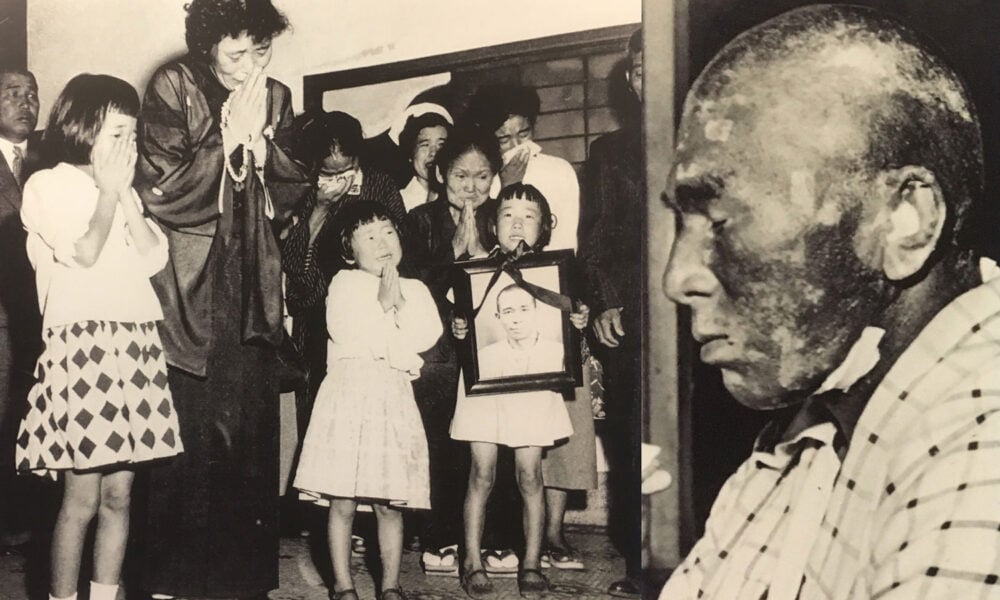One of the enduring lessons from the COVID-19 crisis may be that simple acts from enough ordinary people can make an enormous difference. We can apply it to other large and seemingly intractable problems. Sixty years ago concerned citizens got together to protect their health by demanding an end to nuclear testing.
It was the height of the McCarthy era. The nuclear arms race was just beginning and opposing it was called un-American. But a crew of Japanese fishermen and a small group of Japanese housewives would change the debate. Their signature campaigns set off a chain reaction of global awareness that eventually led the United States to sign an international agreement banning nuclear weapons tests in the atmosphere, under water, and in outer space.
Castle Bravo
On March 1, 1954 the United States tested a nuclear weapon 1,000 times more powerful than the bomb that destroyed Hiroshima. The blast over the Bikini Atoll in the Marshall Islands left a crater on the ocean floor 6,500 feet wide and 250 feet deep. Radioactive debris from the blast rained down over a 7,000 square mile area.
This wasn’t the first U.S. nuclear weapon tested in the Marshall Islands—an impoverished nation of scattered coral atolls close to the equator in the central Pacific Ocean—nor would it be the last. Between 1946 and 1958 the United States conducted 67 explosive nuclear weapons tests there.. The United States took control of the islands from Japan during WWII and administered them as part of a Trust Territory of the Pacific under a mandate from the United Nations until 1986.
It’s hard to imagine a more egregious betrayal of that trust. Several hours after the test—code named Castle Bravo—radioactive debris began falling on the unsuspecting inhabitants of the Rongelap atoll 150 km to the east of the crater. Children ran out to play in the snow-like powder that covered the island. Some ate it. The United States waited two days before evacuating the endangered islanders to a safer atoll more than 650km to the southeast.
Lucky dragon
A Japanese fishing boat called the Daigo Fukuryū Maru—the Lucky Dragon No. 5—got caught in a dirty rain of radioactive fallout from the Castle Bravo test. It pelted the fisherman for hours, stuck to their exposed skin and got into their eyes, noses and mouths. By the time they returned to Japan two weeks later their skin was burned, their hair was falling out, and their gums were bleeding. Six months after returning home, Aikichi Kuboyama, the ship’s radio operator, died from his exposure.

Daigo Fukuryū Maru, or the Lucky Dragon No. 5 got caught in the radioactive fallout from the Castle Bravo test. G. Kulacki/UCS
The Japanese media was fascinated and appalled by their story, which was reported around the world. Memories of the horrors of Hiroshima and Nagasaki were revived and amplified. But this time the Japanese public, and people throughout Asia, began to realize the potential danger was not confined to the site of the explosion. They could all become victims of the atomic bomb. Indonesia’s President Suharto put it this way in his opening address to the first ever international conference of the newly independent nations of Africa and Asia in the city of Bandung in April 1955:
“The food that we eat, the water that we drink, yes, even the very air that we breathe can be contaminated by poisons originating from thousands of miles away. And it could be that, even if we ourselves escaped lightly, the unborn generations of our children would bear on their distorted bodies the marks of our failure to control the forces which have been released on the world.”
The Suganami appeal
Japanese fishmongers saw their businesses crippled by widespread public fear of eating “A-bombed tuna.” Five-hundred of them met in Tokyo’s famous Tsukiji Market and decided to launch a signature campaign against atomic and hydrogen bombs. Their efforts inspired the Suganami City Assembly to pass a supportive resolution.
Six months earlier a group of housewives had begun meeting in the newly opened Suganami Community Center to read books and discuss social issues, including the causes of war, with the center’s part-time director, Kaoru Yasui. After the Castle Bravo test, they joined with neighbors to form the Suganami Council and launched an appeal to the people of Japan, and the world, to ban hydrogen bombs.
The housewives, fishmongers and many other groups who collected signatures were not part of an organized movement. They were ordinary people. Within a month, 250,000 had signed. By the end of 1955 it was 20 million. According to some accounts, nearly a third of the population of Japan eventually signed the appeal.
The notoriety of the Japanese campaign, along with increased scientific investigation of the distribution and consequences of radioactive fallout, created global public health concerns and inspired people to press the nuclear weapons states to stop testing. The U.S. Joint Chiefs of Staff and the U.S. nuclear weapons laboratories were strongly opposed to any agreement on testing. But President Eisenhower joined the Soviets in a testing moratorium in 1958 and negotiations on a treaty began in Geneva. This eventually led to the entry into force the Partial Test Ban Treaty in 1963, which banned nuclear testing in the atmosphere as well as underwater and in space.
This year the survivors of the atomic bombings of Hiroshima and Nagasaki 75 years ago have launched an appeal to ban nuclear weapons. You can do your part to advance the process of nuclear disarmament by lending your signature to the cause.
The photo that appears at the top of this blog is of the family of Aikichi Kuboyama as they grieve for the Japanese fisherman who lost his life because of exposure to radioactive fallout from a US nuclear weapons test in the Marshall Islands in 1954. G. Kulacki/UCS


